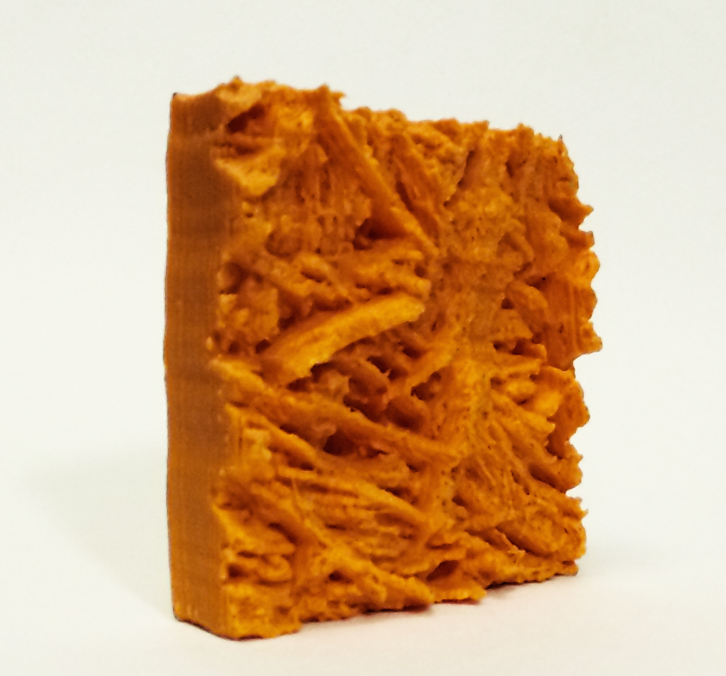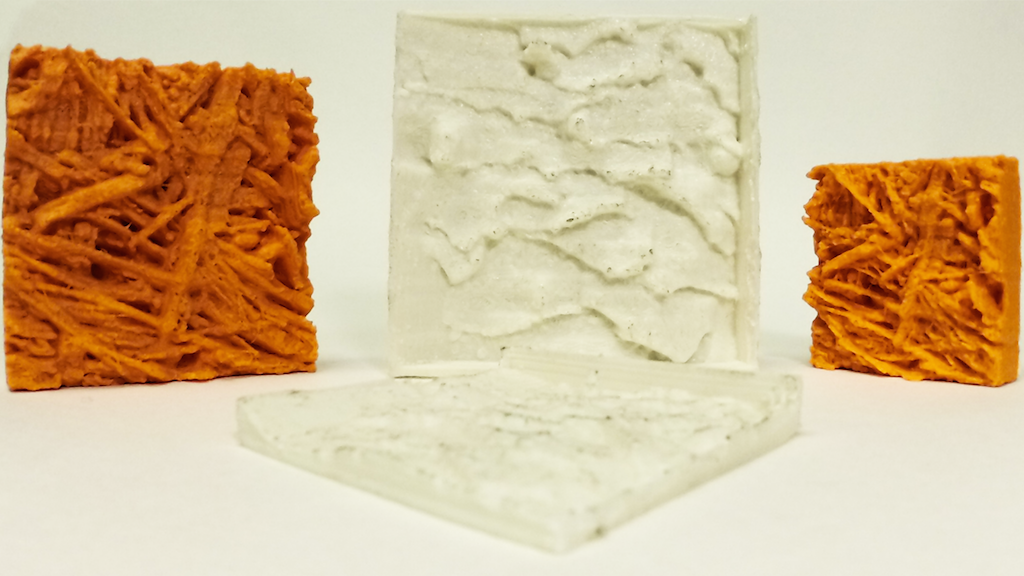
Andrés Gómez has produced a simple tutorial for 3D printing a surface obtained with atomic force microscopy.
The tutorial is quite straightforward; the 3D surface obtained is extruded, sized and chopped to ensure a flat base for printing. The resulting print, seen in the image above, looks pretty good.
There’s only one problem: most of us don’t have access to atomic force microscopy (AFM) equipment. In this case the scan emerged from an Agilent 5100. According to Wikipedia:
Atomic force microscopy (AFM) or scanning force microscopy (SFM) is a very high-resolution type of scanning probe microscopy, with demonstrated resolution on the order of fractions of a nanometer, more than 1000 times better than the optical diffraction limit.
Aside from the AFM equipment requirement, Gómez uses “Mountain Maps” from Digital Surf and the free open source 3D utility Blender to perform the necessary 3D model manipulations.

The tutorial’s AFM scan is of a “HidroGel” at top, but here we see the same process on a scan of a human hair (lighter colored prints).
There are many types of equipment that can produce 3D scans. However, many of these scans are used for visual purposes rather than 3D printing. Most of the process outlined by Gómez can be used to successfully 3D print scans from other equipment, so long as you can create an export file in STL format or one that can be converted to STL.
Via 3DAFM

